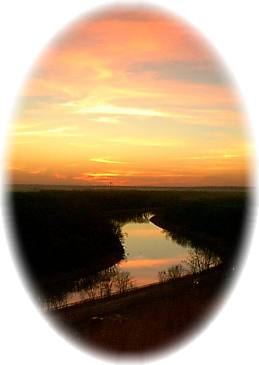South Sioux City, Nebraska

South Sioux City, Nebraska is part of the larger Siouxland region, an area where the borders of Nebraska, Iowa and South Dakota meet. A scenic stop on the historic Lewis and Clark Trail, South Sioux City has a population of over 10,000 and offers all the amenities of a metropolitan area, while maintaining the friendliness of a small town. South Sioux City is accessible by I-29 from the north and south, Highway 20 from the east and west, and by US Highways 75 & 77.
The story of South Sioux City is entwined in the tale of several towns and activities on both sides of the Missouri River.
After an early fur trader set up a trading post along the river in 1855, a town site was registered in August 1856, and named "Harney City." Another town site was surveyed near the Burlington Railroad in 1856 and named "Pacific City."
Transportation between the settlements on opposite sides of the river was by ferry in the summer and on the ice during the winter. John Feenon launched a crude-looking flat boat in 1855, followed by several ferries and the steamer, "Robert Burns," that shuttled people and goods in 1857.
The Harney City location, taken over by a new town site company, changed its name to "Newport," later to become Covington, and again within the year another plat incorporated as "South Covington," merging into one in 1870.
Sioux City, across the river, was notorious for gambling, prostitution, and saloons, despite Iowa law forbidding these things. When Rev.George Haddock, crusader against such vices, was assassinated in 1886, public opinion united to drive out these evil elements. As a result, saloon keepers and gamblers fled across the river, setting up shop in Nebraska. Violence and sudden death were commonplace. During the few years of their existence, these early towns won reputations for lawlessness equal only to those of Tombstone and Deadwood.
Still another town was platted and incorporated in 1887. This settlement called itself "South Sioux City."
With all the traffic, a pontoon toll-bridge was built across the Missouri in 1889. Early in the 1890s public opinion in Iowa swung the other way and saloons were again permitted to reopen in Sioux City. Liquor dealers moved back to the "big city," leaving Covington's gambling houses empty.
Recognizing the need to "organize or dissolve," South Sioux City leaders brought the matter of the consolidation of these rival villages into one town. In a special election in 1893, the merger was approved. Both Stanton and Covington became part of South Sioux City -- parts of which had been washed away by the ever-changing Missouri River. In an attempt to bring law and order to the community, Dakota County authorities ordered all remaining gambling houses closed, and a new image of law-and-order was initiated. In 1895 the "Combination Bridge" was built across the Missouri. It was large enough to accommodate trains, street cars, pedestrians, and horse-drawn vehicles.
Today, South Sioux City offers almost every type of business, civic organization, and activity. Camping and recreational facilities on the 53-acre Scenic Park, located at the east end of the bridge, invites travelers who enjoy the beautiful outdoors along the Missouri River. Accommodations within the city satisfy visitors coming to the city for business or travel with an "indoor" itinerary. Located across the river from Sioux City, Iowa, South Sioux City is within minutes of large city amenities, but offers the personal touch of "hometown" that a smaller city can provide.
